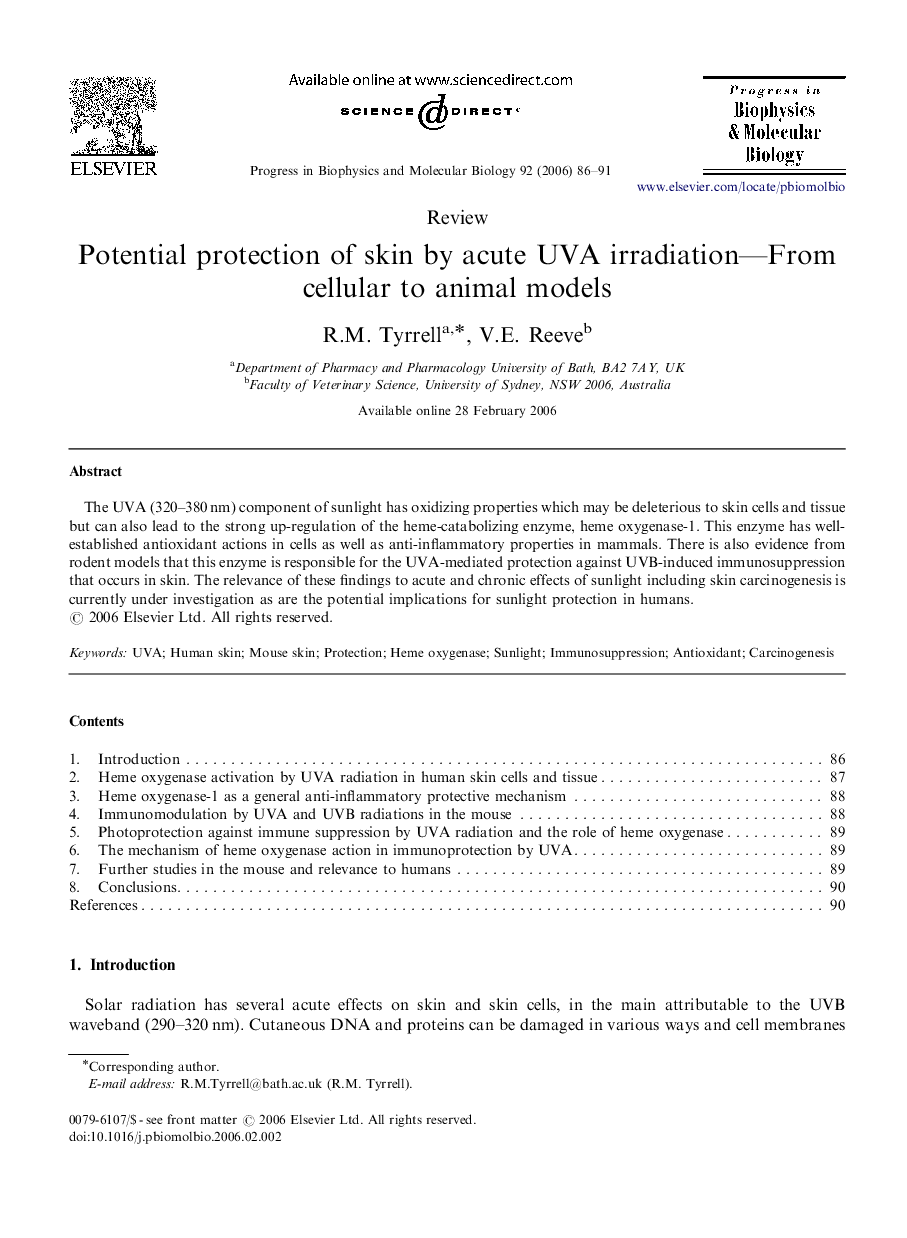| Article ID | Journal | Published Year | Pages | File Type |
|---|---|---|---|---|
| 2070469 | Progress in Biophysics and Molecular Biology | 2006 | 6 Pages |
Abstract
The UVA (320–380 nm) component of sunlight has oxidizing properties which may be deleterious to skin cells and tissue but can also lead to the strong up-regulation of the heme-catabolizing enzyme, heme oxygenase-1. This enzyme has well-established antioxidant actions in cells as well as anti-inflammatory properties in mammals. There is also evidence from rodent models that this enzyme is responsible for the UVA-mediated protection against UVB-induced immunosuppression that occurs in skin. The relevance of these findings to acute and chronic effects of sunlight including skin carcinogenesis is currently under investigation as are the potential implications for sunlight protection in humans.
Keywords
Related Topics
Life Sciences
Biochemistry, Genetics and Molecular Biology
Biophysics
Authors
R.M. Tyrrell, V.E. Reeve,
